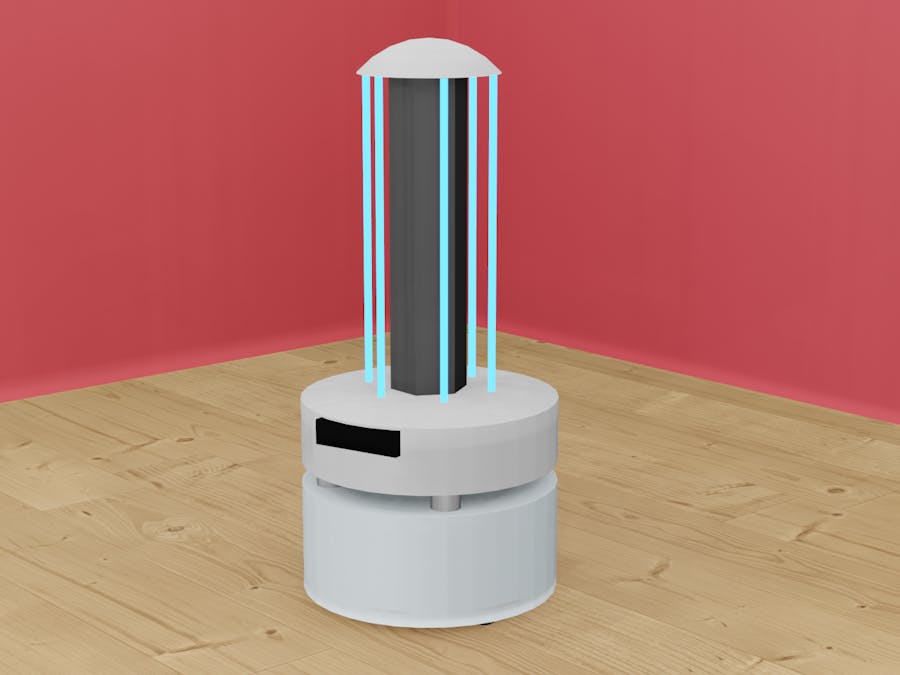UVizard is a fully autonomous sorcerer that uses magic (and UV lights) to eradicate the DNA or RNA of all pathogens in its way, essentially inactivating them. This design is a cost-effective solution to the autonomous disinfection of large spaces like hospitals or warehouses.
LightsSince UV lights work with filaments, electronic ballast is required to regulate the voltage needed to start and maintain the lamp. There are six lamps arranged in a hexagon with a reflector in the center. The reflector is made of aluminum mirrors, which are a cost-effective way of reflecting UV light. Each lamp has a ballast and a starter connected to it in parallel. The ballasts are placed in the top half of the base, next to the Kinect. The curved shape of the top lamp holder is simply a design choice. It can be replaced with a simple cylinder for easy manufacturing.
BatteryA high voltage is required to kickstart the UV lights. The lamp battery has to have 70ah-100ah capacity, 82v nominal voltage, and 170W power output for best performance and efficiency. A 100ah battery can power the UV lamps at their maximum capacity for up to 8 hours before it needs to be recharged, while a 70ah battery can power them for up to 5.5 hours. The base battery is required to power the motors and other components and requires a 50ah capacity for up to 8 hours of performance time.
SafetyWe use 2 sensors for human detection, a long-range PIR sensor and The Human Presence Sensor (AK9753). The AK9753 has a detection range of 3 meters, a temperature feature, and better accuracy. The PIR sensor has relatively less accuracy as it does not perform well in high temperatures or motion, and RF radiation can interfere with the sensor readings. The PIR sensor's long-range, combined with the AK9753's high accuracy, will give us the best human detection sensing system.
There should be no human or animal present in the room without wearing the appropriate protective material while disinfection is being performed.
- Threshold Limit Value Calculations: According to a 2012 report by the American Conference of Governmental Industrial Hygienists(ACGIH), the TLV for a 254nm UV light is 6 mJ/cm2. UVizard emits effective irradiation of 0.46mW/cm2 @ 1 meter, 0.115mW/cm2 @ 2 meters and 0.051mW/cm2 @ 3 meters. If within 3 meters, a person should not be exposed to UV radiation for more than 1 minute. During an 8 hour period, a person (without any protective layer) should be at least 10 meters away from the UV robot.
- The UVizard has a prominent manual kill switch as a precaution.
- If the user activates the robot remotely, an optional feature allows the robot to search the room for any human or animal presence before performing disinfection.
- Since the UV light is not visible, the Indication light will be on when disinfection is being performed.
Maneuverability: The UVizard employs the skid-steering driving mechanism, which allows for quick 360-degree movement. The wheels have a diameter of 200 mm and a combined load capacity of 200 Kgs.
Control: UVizard is controlled using an app. Preset disinfection time, select room to disinfect, and move the robot using the app.
Cost-effective: The cost of making this robot is roughly up to 4000$.
Navigation: Navigation is performed by the calibration of the Lidar sensor and the Kinect camera.
Material: 6105 Aluminum is used for building the robot. It is cheap, sturdy, and readily available.






Comments
Please log in or sign up to comment.